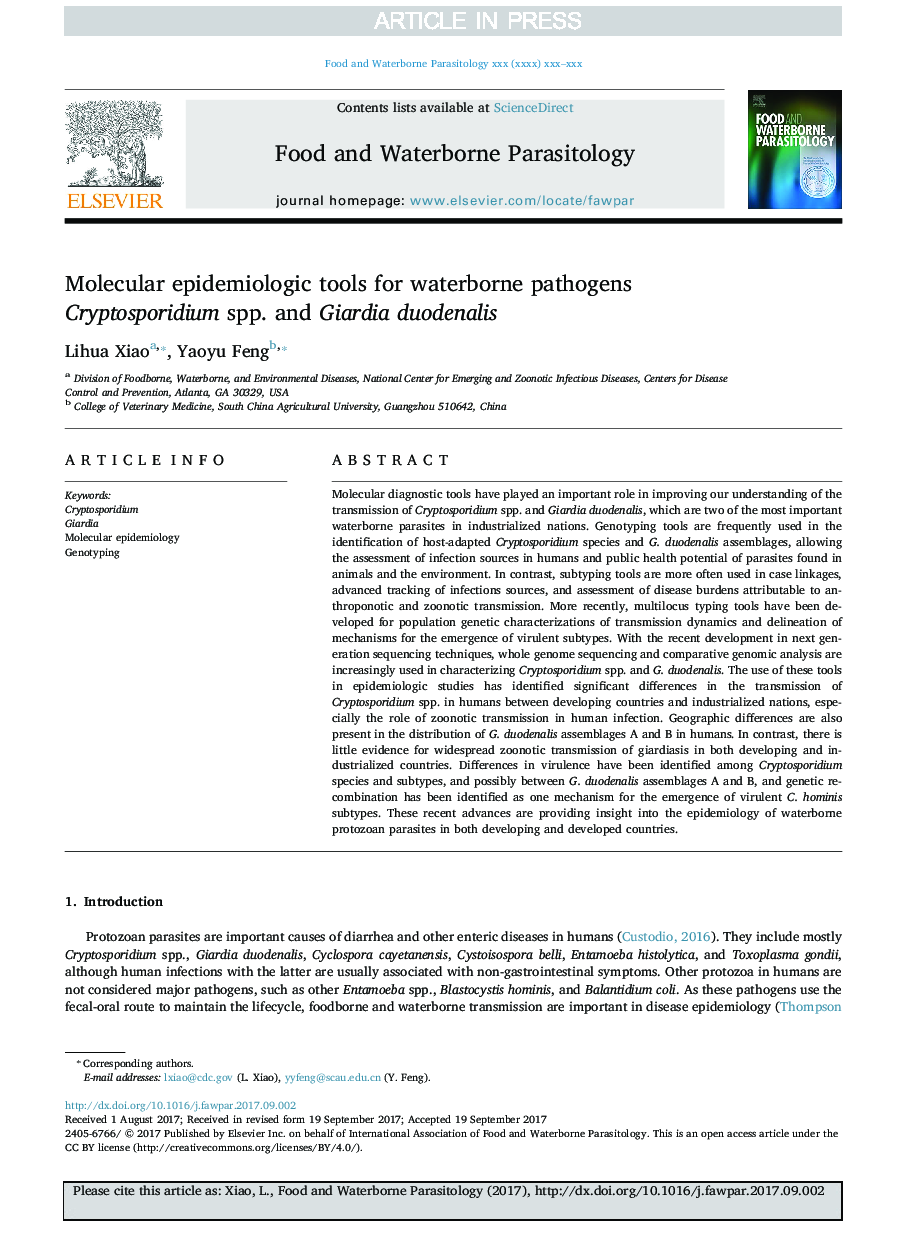| Article ID | Journal | Published Year | Pages | File Type |
|---|---|---|---|---|
| 8506770 | Food and Waterborne Parasitology | 2017 | 19 Pages |
Abstract
Molecular diagnostic tools have played an important role in improving our understanding of the transmission of Cryptosporidium spp. and Giardia duodenalis, which are two of the most important waterborne parasites in industrialized nations. Genotyping tools are frequently used in the identification of host-adapted Cryptosporidium species and G. duodenalis assemblages, allowing the assessment of infection sources in humans and public health potential of parasites found in animals and the environment. In contrast, subtyping tools are more often used in case linkages, advanced tracking of infections sources, and assessment of disease burdens attributable to anthroponotic and zoonotic transmission. More recently, multilocus typing tools have been developed for population genetic characterizations of transmission dynamics and delineation of mechanisms for the emergence of virulent subtypes. With the recent development in next generation sequencing techniques, whole genome sequencing and comparative genomic analysis are increasingly used in characterizing Cryptosporidium spp. and G. duodenalis. The use of these tools in epidemiologic studies has identified significant differences in the transmission of Cryptosporidium spp. in humans between developing countries and industrialized nations, especially the role of zoonotic transmission in human infection. Geographic differences are also present in the distribution of G. duodenalis assemblages A and B in humans. In contrast, there is little evidence for widespread zoonotic transmission of giardiasis in both developing and industrialized countries. Differences in virulence have been identified among Cryptosporidium species and subtypes, and possibly between G. duodenalis assemblages A and B, and genetic recombination has been identified as one mechanism for the emergence of virulent C. hominis subtypes. These recent advances are providing insight into the epidemiology of waterborne protozoan parasites in both developing and developed countries.
Related Topics
Life Sciences
Agricultural and Biological Sciences
Agricultural and Biological Sciences (General)
Authors
Lihua Xiao, Yaoyu Feng,
